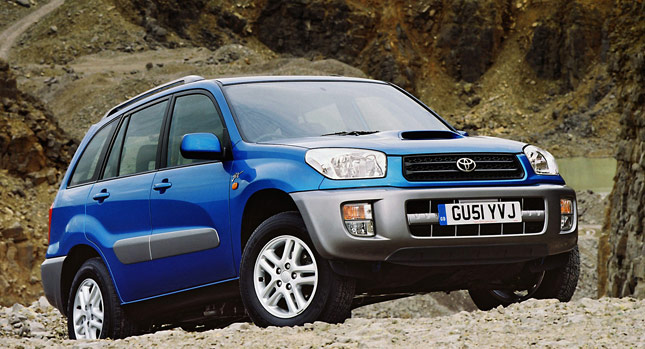The market is flooded right now with compact SUVs, but the car that started all this frenzy is the Toyota RAV4, nearly 20 years ago. At the 1994 Geneva Motor Show, Toyota launched the first-generation RAV4, a compact SUV whose name was an acronym for a Recreational Activity Vehicle with 4-wheel drive.
What originally started out as a niche product developed into a mainstream category twenty years later, with nearly every volume carmaker producing at least one compact SUV.
When Toyota launched the RAV4, it had modest expectations however, forecasting initial global demand of only 4,500 units a year. But when the carmaker received 8,000 orders in the first month alone, production volumes had to be doubled.
Previewed by the 1989 RAV-FOUR Concept, the production Toyota RAV4 was not easy to pitch by Chief Engineer Masakatsu Nonaka, who discovered that it was hard to convince other Toyota departments of the feasibility of creating a mass production car for a market segment that didn’t yet exist.
Furthermore, many people inside the business had a hard time understanding the concept of a car platform-based model that combined the benefits of a 4×2/4-type vehicle, including higher ground clearance, increased interior height and the availability of all-wheel drive, with the handling and fuel economy of a compact model.
The project was stopped at one point, but Toyota’s European and Japanese sales divisions convinced management that it was time for this new type of car. And they were right: in its first year on the market, the RAV4 was chosen by 53,000 customers worldwide. Sales doubled in 1995 and by 1996, the total had tripled. From 1994 through 2013, more than 5 million have been sold worldwide, of which 1.3 million in Europe, including 167,000 in the UK.
Toyota says more than 90 percent of all RAV4s ever sold are still on the road today, which says a lot about the brand’s SUV.
Toyota RAV4 Milestones
1994: The first generation RAV4 debuts at the Geneva Motor Show with a transverse-mounted, 2.0-liter, 127bhp petrol engine and full-time all-wheel drive. The RAV4 was available with a five-speed manual transmission or a four-speed automatic, but with no transfer box or low-range ratios. It had a unitary, monocoque construction and featured independent suspension front and rear.
1995: A five-door model is made available in the UK.
1997: Production of an electric-powered RAV4 is launched, continuing until 2000.
1998: A three-door soft-top RAV4 is offered in the UK.
2000: The second generation RAV4 is introduced, bringing an increase in length (+55mm/2.16in for the 3-door and 40mm/1.57in for the 5-door) and 1.8 and 2.0-liter petrol engines. The AWD system gets a limited-slip center differential, with a Torsen LSD offered as an option on the rear axle.
2002: The first diesel RAV4 is launched.
2006: The third generation RAV4 is built on a new platform and is sold exclusively as a five-door model, but with different wheelbases in different world markets. The car is significantly longer: +190mm (7.48in) for the short wheelbase version and +475mm (18.7in) for the long wheelbase. A new AWD system with an electronically controlled coupling was introduced, along with Downhill Assist Control and Hill-start Assist Control.
2010: A new RAV4 EV concept is developed in the USA with Tesla.
2013: The fourth generation RAV4 is again a five-door only model, but is now offered with a single wheelbase worldwide. It’s longer by 235mm (9.25in) compared to the previous SWB model and marks the debut of the Dynamic Torque Control AWD system.
By Dan Mihalascu
PHOTO GALLERY
































